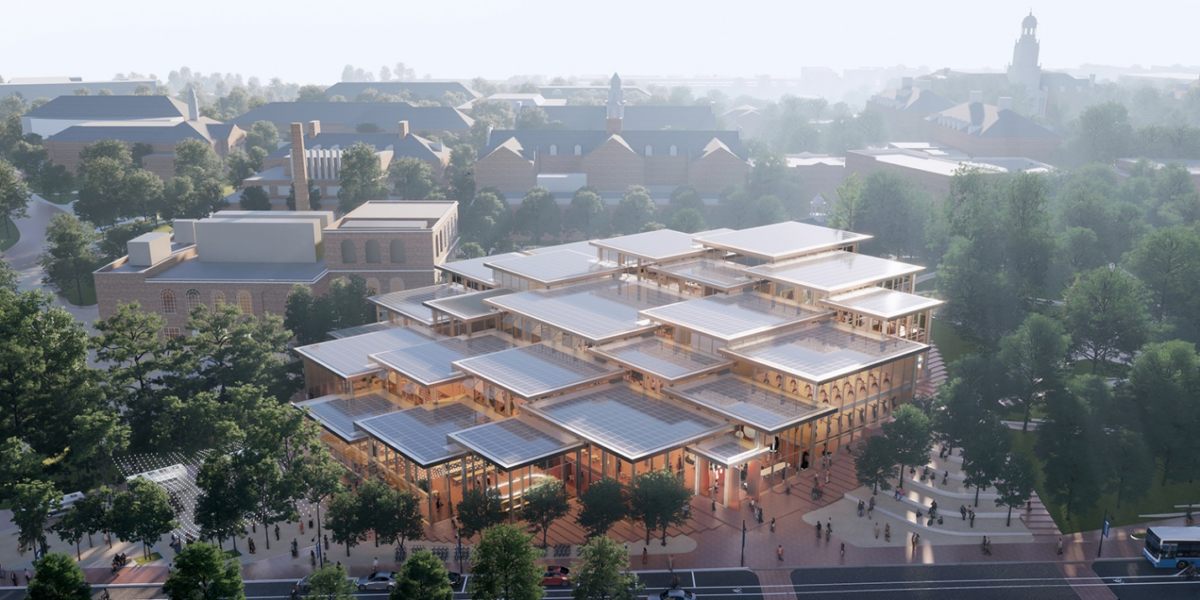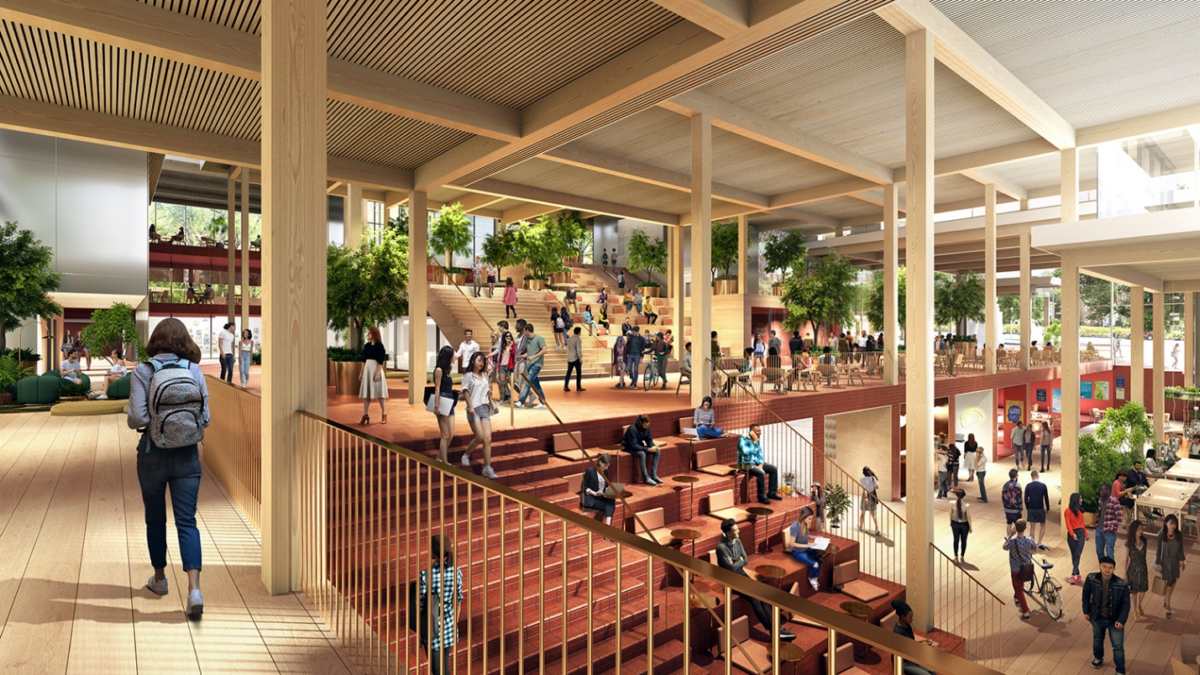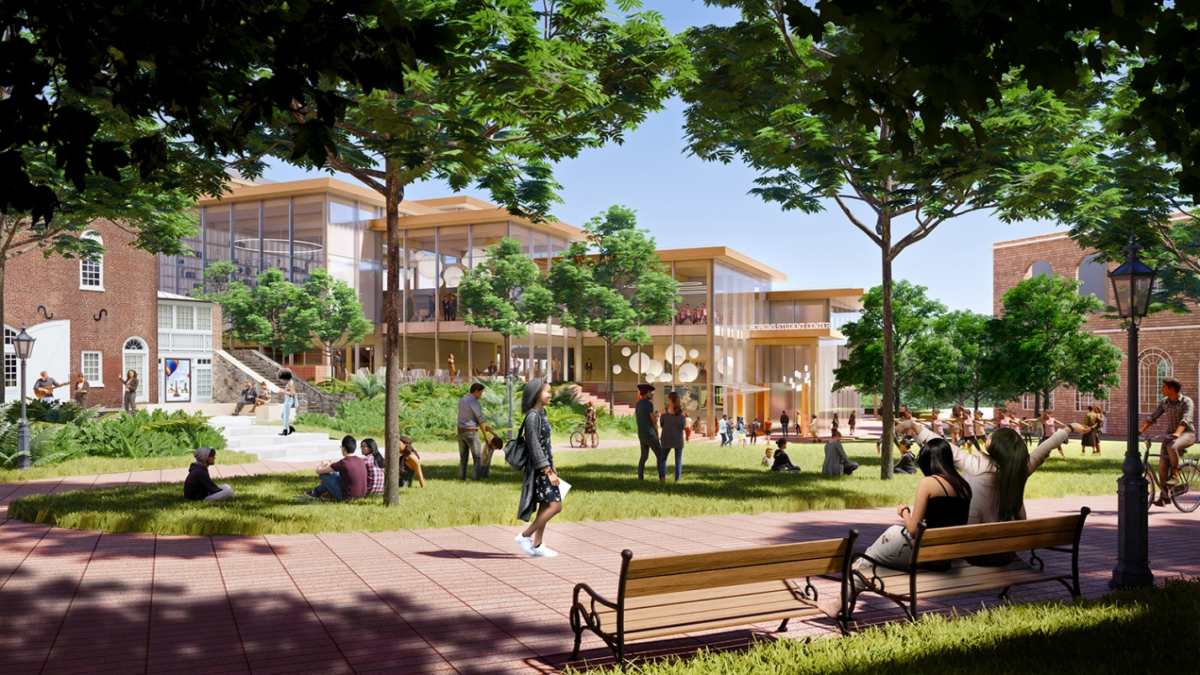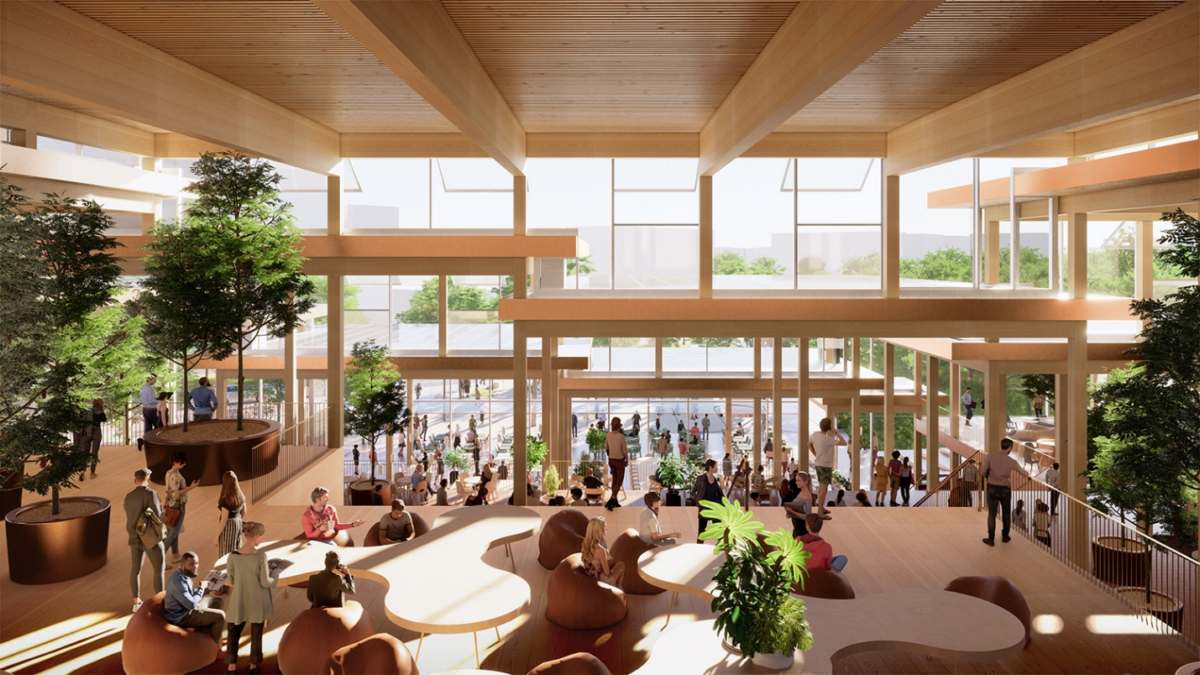Johns Hopkins University selects BIG
to rejuvenate the social experience
for students. The design for Hopkins
Student Center, or ‘The Village’, is
an open, modern, and welcoming
facility envisioned as a social
engagement hub for all members of
the Hopkins community.

BIG is thrilled to have been
selected as the designer of the new
Student Center for Johns Hopkins
University; the result of a
months-long international design
competition led by a special
advisory committee. Students and
student affairs staff were included
throughout the process, and more
than 1,200 students, faculty, staff,
and alumni responded to a June
survey, inviting evaluation of the
four design finalists. Feedback on
BIG's concept was overwhelmingly
positive, with survey respondents
embracing the building's open feel,
connections to surrounding exterior
spaces, abundance of natural
daylight, and integrated features
that support the university's
sustainability goals. BIG has teamed
up with Shepley Bulfinch as
Architect of Record, along with
Rockwell Group for interior design
and Michael Van Valkenburg
Associates for landscape design.
The approximately 150,000 square
foot building will include spaces
for relaxation and socialization,
creative and performing arts spaces,
student resources and support
services, lounges, a digital media
center, a performance space with
seating for 200 people, and a
dynamic dining hall that connects
directly onto a new plaza along
Charles Street. The facility will
satisfy the long-acknowledged need
for a true non-academic gathering
spot on the university’s Homewood
campus in Baltimore, Maryland.
“This will be a new kind of space
for us—one that is not academically
focused, but entirely social by
design, Open to all, reserved for
none, and boasting the kind of
flexible spaces that invite
connection and collaboration, this
will be a place where athletes and
actors, step teams and SGA members
can gather side by side.” Ronald J
Daniels, President, Johns Hopkins
University.

Located just south of the iconic
open space on the Johns Hopkins
campus known as “The Beach” at the
intersection of 33rd and Charles
Streets, the facility will foster
greater connectivity between the
campus and the neighboring Charles
Village community by creating a
prominent, welcoming new entry point
at 33rd Street. It will turn an area
of the campus into a dynamic hub at
the crossroads of student activity.
As a natural gateway, the area will
connect Charles Village and more
than 3,500 Hopkins students who live
in the neighborhood, to the heart of
the Homewood campus.
“The transition from the programming
feasibility study to the start of
the design process has been
incredibly exciting. To take what
Hopkins students have shared as
their aspirations for the building
and to see those pieces begin to
come to life through a dynamic
design process gives me confidence
this building will be everything our
students hoped for, and more.”
Alanna Shanahan, Vice Provost of
Student Affairs, Johns Hopkins
University.

The Village is conceived as a
central living room surrounded by a
collection of spaces tailored to the
needs of the Hopkins community. The
building negotiates the sloping
grade of the site to allow direct
entry from all four levels of the
building, while maintaining a
friendly human scale and providing
several accessible routes across the
site. Arriving on Charles Street,
students and visitors are greeted by
an open building façade with dining
areas spilling out onto a
sun-splashed plaza.
“Having taught at a number of
world-renowned universities on the
East Coast, it is an incredible
honor to have been chosen to create
the framework for the life of the
Johns Hopkins students. We have
attempted to imagine and design the
Campus Center like a village
condensed from a plethora of
different spaces and pavilions for
the greatest possible diversity of
activities, interests and
sub-cultures.” Bjarke Ingels,
Founder & Creative Director,
BIG-Bjarke Ingels Group.

The entrance of The Village opens
into a cascading interior landscape
of dining, performance, lounging,
and socializing. The mass timber
structure provides a warm and
acoustically comfortable environment
as light filters in between the
photovoltaic roof panels—features
that help to meet the university’s
larger sustainability goals.
"Often the greatest ideas and
breakthroughs occur away from the
desk, when minds have a chance to
wander, to play, to riff with others.
The new Hopkins Student Center is
designed to provoke the
sometimes-necessary distractions
that complement rigorous academic
life - a place for a future
generation of Salks, Curies, and
Cricks to unlock their next great
discovery." Leon Rost, Partner,
BIG-Bjarke Ingels Group.
An indoor landscape—as vast as the
Beach next door—is comprised of a
cluster of flexible spaces, which
open out on to four rejuvenated
public spaces: an events-focused
commons, the shaded paths of the
Grove, an entry plaza at 33rd street,
and a new food market and plaza to
the south. The signature red brick
paths of Homewood campus seamlessly
flow through the building.
The Village transforms the landscape
around the building to create
outdoor spaces for student
activities and events. A central
plaza can host pop-up exhibits or
performances, as well as vendors and
food trucks to enliven the North
Charles Street corridor.
The open design allows light to
enter the clerestory windows and
leaves all student activities and
school spirit on display. The
Village becomes an ever-changing
mosaic of the Johns Hopkins
Community, and a village greater
than the sum of its parts.
The new Hopkins Student Center is
set to begin construction in Spring
2022 and to be completed by Fall
2024. This is BIG’s third academic
building in the United States,
following the Isenberg School of
Management Business Innovation Hub
for the University of Massachusetts
Amherst and The Heights Building for
Arlington Public Schools, both
completed in 2019.
Facts
Name: Hopkins Student Center
Type: Competition
Size: 13,935m2
Location: Baltimore, Maryland, US
Client: Johns Hopkins University
Collaborators: Shepley Bulfinch (Architect
of Record), Rockwell Group (Interior
Architects), Michael Van Valkenburgh
Associates (Landscape Architects)
Visualisation
by BIG-Bjarke Ingels
Group, Copenhagen, Brooklyn/ New York



